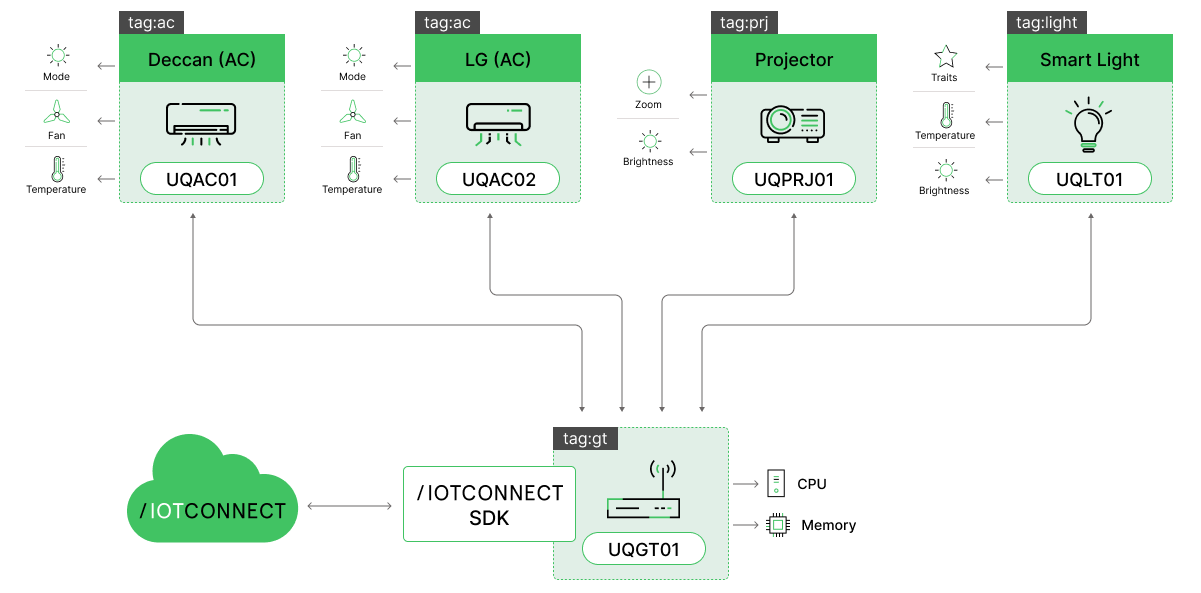Gateway Devices
An internet-connected smart device that communicates with non-internet-capable devices using Bluetooth, Wi-Fi, or other protocols captures data and sends it to /IOTCONNECT. These devices fall under the category of Gateway Devices in /IOTCONNECT.
For example, consider a Smart Conference Room use case that includes multiple air conditioners, lights, and projectors. Since these devices cannot directly send data to the cloud, a Gateway Device can be introduced. This device acts as an intermediary, receiving data via various protocols such as Bluetooth or infrared and transmitting it to /IOTCONNECT.
/IOTCONNECT offers a tagging feature that enables users to identify attributes of both Gateway Devices and Child Devices. This functionality helps in creating structured templates within /IOTCONNECT. Once a template is built, devices can be created based on it.
For instance, in the Smart Conference Room scenario:
- gt can be used as a tag for the Gateway Device attributes.
- ac can represent the Air Conditioner attributes.
- light can denote the Smart Light attributes.
- prj can indicate the Projector attributes.
Now, let’s see how this template would be structured in /IOTCONNECT.

In this template created within /IOTCONNECT, the Gateway Device is assigned two attributes: CPU and Memory. The Air Conditioner includes three attributes: Temperature, Mode, and Fan. The Smart Light is configured with Temperature, Traits, and Brightness, while the Projector has two attributes: Zoom and Brightness.

The Gateway Device (UQGT01) is responsible for communicating with all connected devices, including two air conditioners (UQAC01 & UQAC02), one projector (UQPRJ01), and one smart light (UQLT01). It collects data from these devices and transmits telemetry to the SDK, which then sends the data to the platform.
In a bidirectional communication setup, when a command or OTA update is received, the Gateway Device determines the appropriate response based on the assigned tags and relays the command to the corresponding device.
Overall, if you have non-internet-connected (dumb) devices and need a reliable gateway that can interact with multiple such devices for bidirectional communication, a Gateway Device is the ideal solution.
